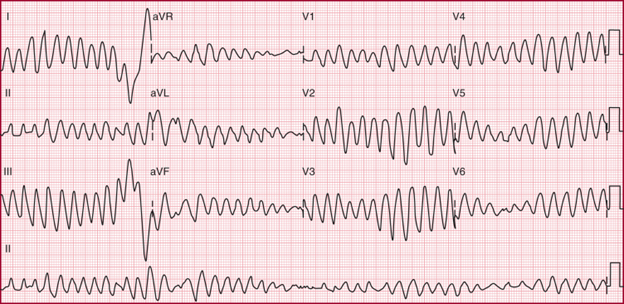If you’re preparing for the United States Medical Licensing Examination® (USMLE®) Step 2 exam, you might want to know which questions are most often missed by test-prep takers. Check out this example from Kaplan Medical, and read an expert explanation of the answer. Also check out all posts in this series.
A six-year-old boy with a history of deafness is brought to the emergency department after collapsing at home. He was running when he suddenly turned pale and fell to the floor. He subsequently recovered in the ambulance. In the emergency room, he appears pale. The parents are concerned and state that the boy is not taking any medication. There was a maternal uncle who also experienced similar episodes but died at an early age. An electrocardiogram is performed and shows marked QT prolongation and morphologic abnormalities of the T waves. Within one minute, the patient again loses consciousness and the electrocardiogram at this time is shown. Which of the following is the most likely diagnosis?
A. Jervell-Lange-Nielsen syndrome
B. Ortner syndrome
C. Romano-Ward syndrome
D. von Hippel-Lindau syndrome
E. Wolff-Parkinson-White syndrome
The correct answer is A.
Kaplan Medical explains why
Kaplan Medical explains why
Only one answer choice describes a patient with inherited long QT syndrome and sensorineural deafness and that is Jervell-Lange-Nielsen syndrome.
Why the other answers are wrong
Why the other answers are wrong
Choice B. Ortner syndrome is incorrect. Ortner syndrome is recurrent laryngeal nerve palsy caused by a large left atrium associated with mitral stenosis.




